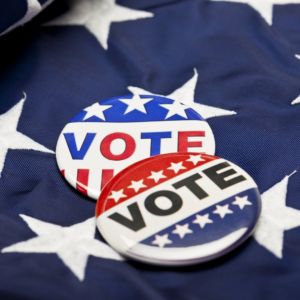This is the first presidential election in 50 years without the full protection of the Voting Rights Act.
In 1965 President Lyndon B. Johnson signed the Voting Rights Act to stop state and local governments from adopting laws or procedures that deny American citizens the equal right to vote based on their race. In 2013, the Supreme Court rolled back key parts of this law, opening the door for states and localities with a history of voter discrimination to pass voting rules that make it harder for many Americans to vote.
In the aftermath of the decision, Alabama, Mississippi, North Carolina and Texas moved forward with restrictions that previously would have been reviewed under the Voting Rights Act. Many other states have since pushed legislation and taken other actions that right now are making it harder for millions of eligible Americans to vote.
For example, some state governments have created lists of people to remove from the voter rolls and cut back on early voting hours in targeted areas. In other places, governments have strictly limited what qualifies as a “valid” ID documentation voters must produce in order to cast a ballot.
Thousands of eligible voters have been illegally purged.
Removing ineligible voters from the rolls is an important part of protecting the integrity of our election system. But it must be done fairly and accurately. Purging thousands of eligible Americans from the voter lists is plain wrong. When politicians make lists of voters to purge, these lists are typically full of mistakes. Many voters get unfairly caught up in the process and risk losing their rights. Military service members who often move, college students who have changed their address, occasional voters, veterans, seniors and voters of color are most often the ones affected by deeply flawed voter purges.
New voter ID requirements are onerous and restrictive.
As many as 21 million Americans do not have government-issued photo identification. Voters in rural or dense urban areas, communities of color, and low-income individuals are less likely to have photo IDs showing a current address. These laws don’t improve the integrity of our elections, but they do exclude eligible voters from participating in our democracy. Many of us are accustomed to providing ID but many citizens simply do not have them. And these eligible voters should not be denied their fundamental rights.
The United States needs to keep our voting system free, fair and accessible by restoring the Voting Rights Act.
There is a bipartisan proposal in Congress to restore the Voting Rights Act and strengthen protections for the right to vote. This important piece of legislation would increase transparency by requiring public disclosure of certain changes to voting laws. It would enable official election observers to monitor elections in places with a recent history of discrimination.
When the next Congress is sworn in come January, it is essential that it take action to right this wrong.
In the meantime, the League of Women Voters is committed to making sure the 2016 election is as fair and transparent as possible. Our digital election tool www.VOTE411.org has the most information available to help voters check the rules in their location, learn about the candidates and get ready to vote. The League will send hundreds of election observers out to make sure the election runs smoothly. As part of the Election Protection Coalition, we have volunteers manning the phones to answering voters’ questions and responding to Election Day issues (866-OUR-VOTE).
The United States can be proud of an election system that works remarkably well. But it does have flaws that must be addressed. As the world’s leading democracy, we can’t stand for laws that block some eligible Americans from voting, or that deny them the opportunity to participate equally in our democracy.

